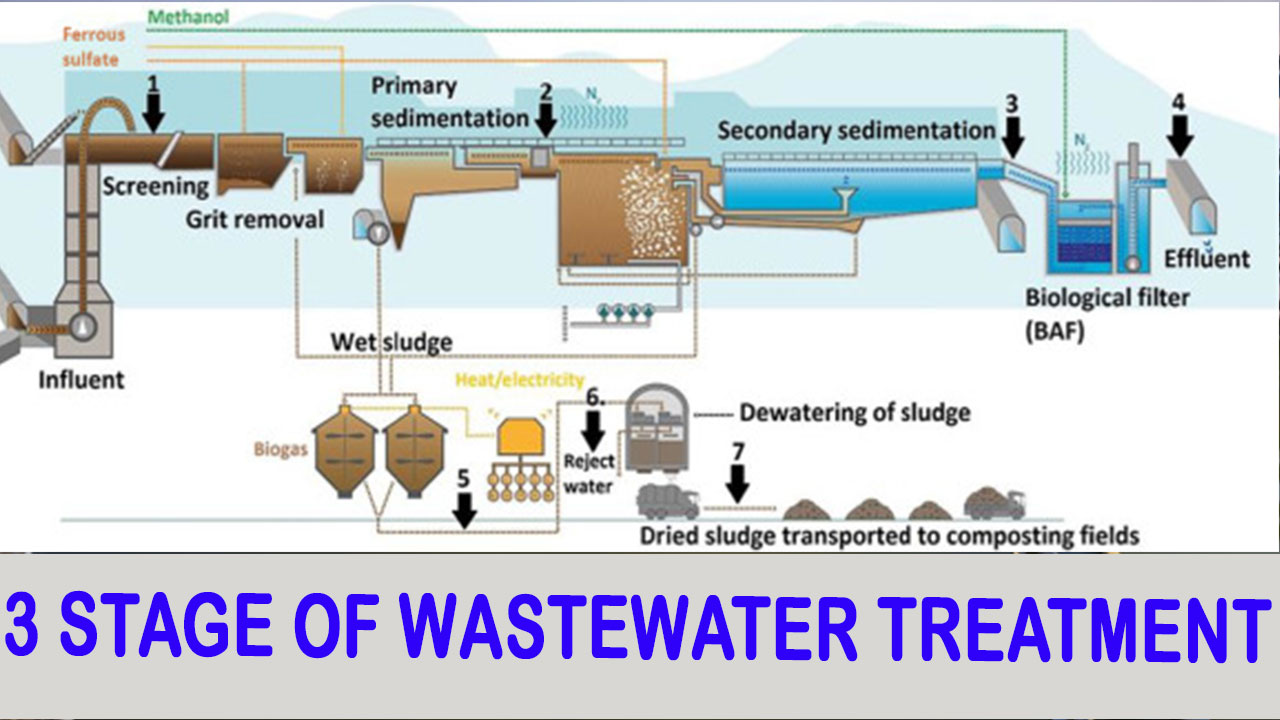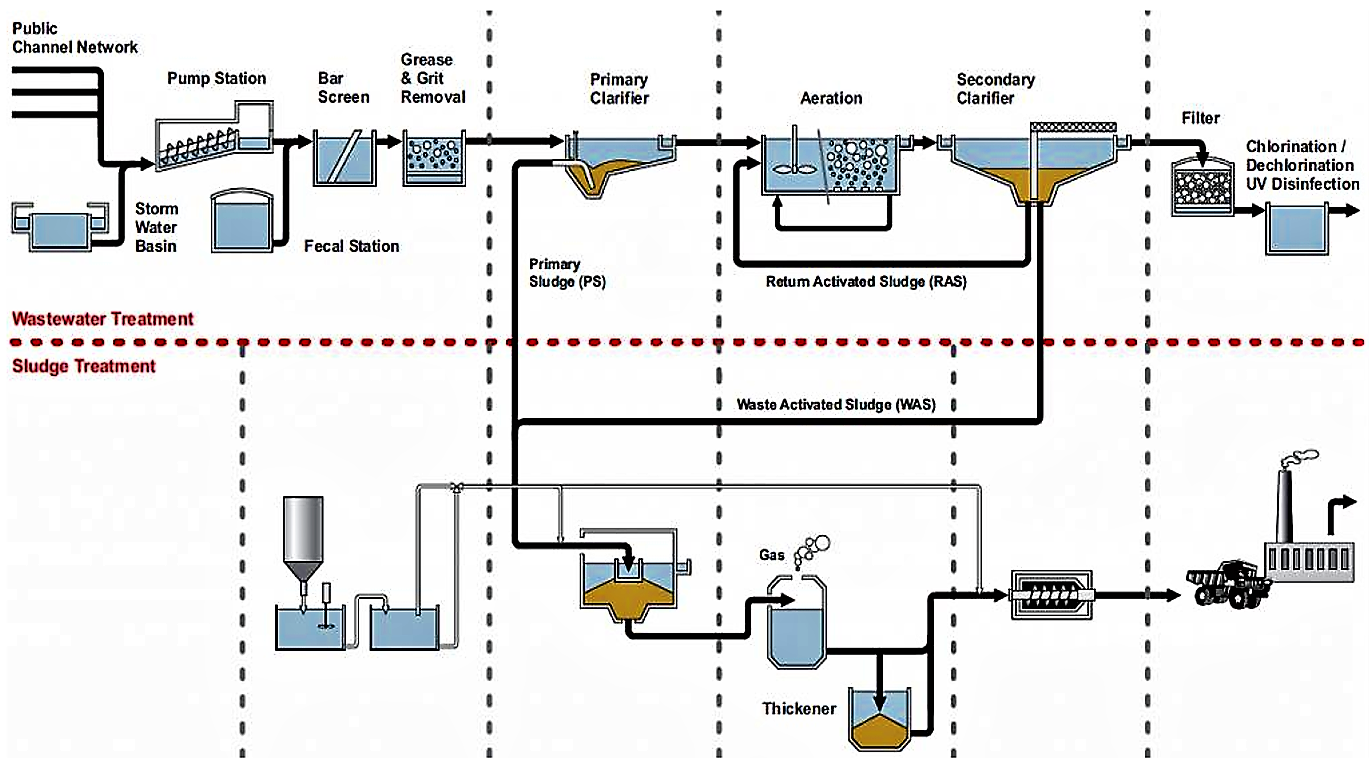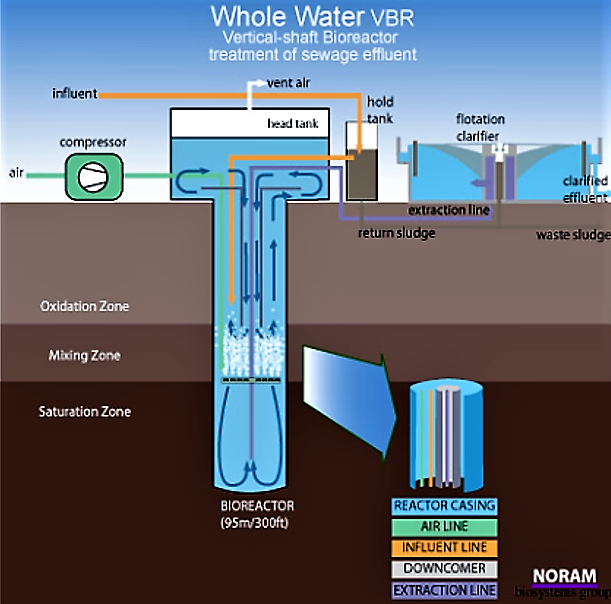Activated Sludge Is Used in Which Sewage Treatment Step 1
This means that treatment occurs as pollutants are used as a food source by many different types of. The process is followed by.
The activated sludge process in the treatment of wastewater involves blowing oxygen or air into raw unsettled sewage.

. Activated sludge is a biological process that utilizes microorganisms to convert organic and certain inorganic matter from wastewater into cell mass. Sludge solids that are collected at the top and bottom of the primary and secondary sedimentation tanks are pumped into a sludge thickener. Used to determine the flow distributions for a step-feed activated sludge process that result in maximum nitrogen removal.
An aeration tank where air is injected in the mixed liquor. A The aeration tank is operated at an MLSS concentration of 3500 mg TSSL and a hydraulic retention time of 6 h. The general arrangement of an activated sludge process for removing carbonaceous pollution includes the following items.
This process smashes the solids. Step-By-Step Solids Treatment Step 1. Activated sludge is commonly used as a wastewater treatment process.
The activated sludge process is a biological wastewater treatment process. Here the liquid volume of the sludge is decreased to increase the efficiency of the sludge treatment process. The first step of this primary treatment is to use aeration tanks that let the liquid settle and the liquid will then flow into more aeration tanks where bacteria help remove dirt and debris particles from water.
FR-2490208-A1 chemical patent summary. B A small part of the activated sludge is pumped back into the aeration tank to serve. Asked by Topperlearning User 24th Jun 2014 0356.
Activated sludge treatment can define as the wastewater treatment plant which eliminates the particulate matter like sand unwanted inorganic and organic wastes and harmful microorganisms from the sewage waste. Activated Sludge Process The most common suspended growth process used for municipal wastewater treatment is the activated sludge process. The settled sludge is either returned RAS or wasted WAS.
Along with the online lesson read Chapter 8. SEWAGE TREATMENT PLANT BASED ON ACTIVATED SLUDGE PROCESSThis process is used for treatment of sewage where micro-organism degrade the organic material and. The Conventional Activated Sludge Process is used over a wide range of wastewater flow rates from small to very large plants.
The activated sludge process is one of the most commonly used for secondary wastewater treatment. The removal of BOD is done by a biological process such as. A As the BOD of sewage or waste water is reduced to about 10-15 the effluent is passed into a settling tank where the bacterial flocs undergo sedimentation.
Activated sludge is a process in sewage treatment in which air or oxygen is forced into sewage liquor to develop a biological floc which reduces the organic content of the sewage. The sewage is bubbled and sewage liquor is discharged into an activated sludge chamber. A conventional activated sludge process is used in the secondary treatment step of a municipal wastewater treatment plant treating a flow rate Q of 2000 m3d with an influent BOD concentration S of 400 mgL.
The activated sludge process is a type of wastewater treatment process for treating sewage or industrial wastewaters using aeration and a biological floc composed of bacteria and protozoa. As a suspended-growth biological treatment process activated sludge utilizes a dense microbial culture in suspension to biodegrade organic material under aerobic conditions and form a biological floc for solid separation in the settling units. 1 Primary treatment is the first step in wastewater treatment and however screening is always the primary stage of sewage treatment.
Sewage Wastewater Treatment Technologies 1. Activated Sludge in your textbook Operation of Wastewater Treatment Plants Volume I. Excess liquid is diverted back into the system.
This paper presents data collected from a survey on sewage sludge treatment and. By adding Activated sludge into wastewater and the mixture is aerated and agitated for a specified amount of time there by allowing the activated sludge to settle out by sedimentation and is disposed of wasted or reused returned to the aeration. The sediment is called activated sludge.
The municipal wastewater treatment is the BOD-removal. Contact stabilization activated sludge is characterized by the use of two aeration tanks for each process train one to contact the influent wastewater and return activated sludge contact tank and the other to aerate the return activated sludge stabilization tank and promote the biodegradation of the organics absorbed to the bacterial flocs. The aeration tank in a conventional activated sludge process is typically designed with a long narrow.
The flow diagram and general description is that given above in the Activated Sludge Background section. The model indicates that nitrogen removal efficiency in a step-feed activated sludge process is highly dependent on the ultimate biochemical oxygen demand BODjJ-to-total Kjeldahl nitrogen TKN ratio of the wastewater. The activated sludge is then separated from the liquid by clarification.

Facts At Your Fingertips Activated Sludge Process Chemical Engineering Page 1

What Are The Three Stages Of Sewage Treatment How Does Each Stage Work


No comments for "Activated Sludge Is Used in Which Sewage Treatment Step 1"
Post a Comment